SAST is a method designed to detect security vulnerabilities within an application's source code. By analyzing the code structure, SAST identifies potential flaws early in the development cycle, promoting secure coding practices and reducing the risk of security issues in production.
Unlike dynamic testing that examines an application during runtime, SAST operates on static code analysis. This early detection capability is crucial as it enables developers to address vulnerabilities before the code is deployed. SAST tools integrate seamlessly with development environments and CI/CD pipelines, enabling continuous security monitoring throughout the software development lifecycle. Real user insights often emphasize the importance of SAST in mitigating risks and ensuring compliance with security standards.
What are the key features offered by SAST tools?
What benefits or ROI should users look for when evaluating SAST solutions?
SAST solutions are implemented across multiple industries such as finance, healthcare, and manufacturing, where compliance and data protection are critical. In finance, these tools safeguard against vulnerabilities that could lead to data breaches, while in healthcare, they ensure patient data remains secure. Manufacturing industries leverage SAST to protect intellectual property and maintain system integrity.
For organizations, SAST is helpful as it provides a proactive approach to security, integrating seamlessly into existing workflows and enabling teams to detect and address vulnerabilities early in the development process, ensuring robust and secure applications.
| Product | Market Share (%) |
|---|---|
| SonarQube Server (formerly SonarQube) | 19.7% |
| Checkmarx One | 10.0% |
| Veracode | 6.9% |
| Other | 63.4% |




























![Spirent CyberFlood [EOL] Logo](https://images.peerspot.com/image/upload/c_scale,dpr_3.0,f_auto,q_100,w_60/xd1mg1yqm7e2o657pxh53duf6ryg.jpg?_a=BACAGSDL)
















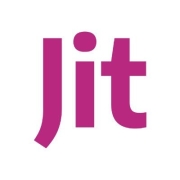





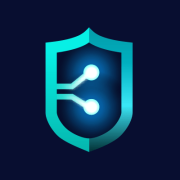






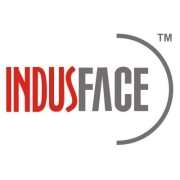





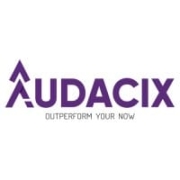




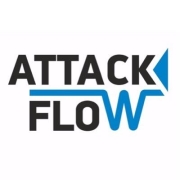









The different types of application security include:
Static Application Security Testing (SAST) solutions are critical for identifying and mitigating security vulnerabilities in software applications. These solutions can be categorized into several types, each offering distinct approaches and benefits. Understanding the variety of SAST tools available is essential for organizations to protect their applications from security breaches effectively.
1. Static Application Security Testing (SAST): Also known as white-box testing, SAST tools analyze an application’s source code, bytecode or binaries for security vulnerabilities without executing the code. These tools are typically integrated early in the software development lifecycle, and they can identify issues such as input validation errors, insecure dependencies, and cross-site scripting flaws. SAST is beneficial as it helps detect vulnerabilities early, reducing the cost and effort required for remediation.
2. Dynamic Application Security Testing (DAST): Unlike SAST, DAST tools perform testing on a running application — essentially a form of black-box testing. DAST tools do not require access to source code and can identify runtime and environment-related vulnerabilities such as authentication issues, configuration flaws, and injection attacks. These tools are valuable for finding vulnerabilities that only appear when an application is running.
3. Interactive Application Security Testing (IAST): IAST combines elements of both SAST and DAST to provide a more comprehensive analysis. IAST tools are typically integrated as agents within an application or its environment, allowing them to analyze application behavior and code in real-time. IAST can effectively identify both static and dynamic vulnerabilities, offering combined benefits of SAST and DAST approaches.
4. Software Composition Analysis (SCA): SCA tools focus on identifying vulnerabilities in third-party components like libraries and frameworks used within an application. Since a significant portion of modern applications includes open-source components, SCA is crucial for managing the security of these external elements. SCA tools can also help with license compliance and management aside from security.
5. Runtime Application Self-Protection (RASP): RASP tools integrate into an application or its runtime environment to provide continuous security by detecting and responding to threats in real-time. RASP can identify and mitigate attacks as they happen, offering an additional layer of security during an application's operational phase.
Each type of SAST solution has its distinct strengths, and often, organizations benefit most from a combination of these tools for a well-rounded approach to application security. Integrating SAST solutions across different stages of the software development cycle helps in achieving robust security and compliance with industry standards.
SAST solutions play a crucial role in the DevOps pipeline by integrating early in the software development lifecycle. They allow you to identify and fix security vulnerabilities in the codebase before the application is deployed. By doing so, SAST tools ensure that security becomes a shared responsibility among developers and security teams, facilitating quicker development cycles without compromising on security. This early integration also helps to reduce the cost and effort associated with fixing vulnerabilities later in the development process.
What are the key benefits of using SAST solutions?Using SAST solutions offers multiple benefits, including early detection of vulnerabilities, cost reduction in fixing bugs, and improved code quality. SAST tools help in identifying security flaws in the source code, which allows you to address issues even before the software is compiled. This proactive approach enhances the overall security posture of your applications. Additionally, by integrating SAST into continuous integration and delivery pipelines, you can maintain development speed while ensuring robust security checks.
How can SAST solutions improve code quality?SAST solutions improve code quality by scanning your source code for potential bugs and vulnerabilities that might not be immediately apparent. By identifying issues like buffer overflows, SQL injections, or insecure data handling practices, you can enforce coding standards and best practices across the development team. This leads to cleaner, more secure, and maintainable code. Regular use of SAST tools in the development process encourages a security-first mindset among developers.
What are common challenges when implementing SAST solutions?Common challenges when implementing SAST solutions include false positives, integration difficulties, and performance impacts. False positives can create noise, leading to mistrust and ignorance of valuable findings. Proper configuration and tuning are necessary to mitigate these issues. Integration challenges arise when SAST tools disrupt existing workflows, but selecting tools that fit seamlessly into your development environment can alleviate this. Performance impacts might occur if scans are not optimized, so scheduling scans during non-peak hours can help manage this.
Can SAST solutions help with compliance requirements?SAST solutions can help you meet compliance requirements by providing detailed reports on code security, which can be used for regulatory audits and assessments. They can detect security flaws that might violate standards like OWASP, PCI-DSS, or GDPR. SAST tools can also provide a historical record of code quality and security improvements, which can be crucial for demonstrating compliance and due diligence in software development practices. By using these tools, you ensure that your applications adhere to industry-specific regulations and best practices.